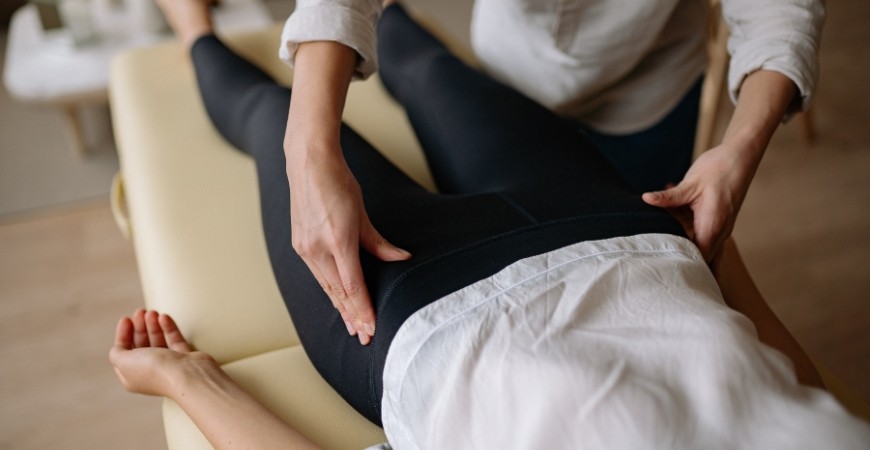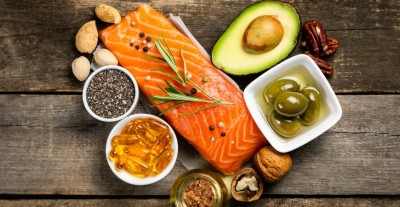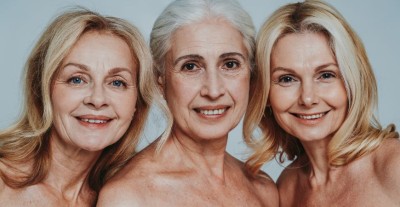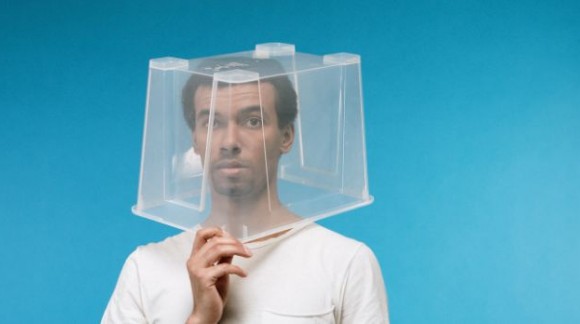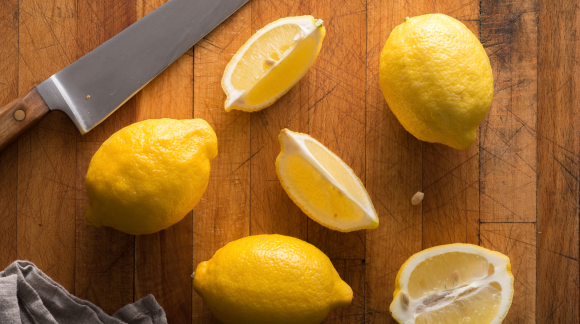When Hip Osteoarthritis Turns Every Step into a Daily Challenge at 50
At 50, Camélie B., a secretary in a small business based in Gimela peaceful town west of Lausanne wakes up each morning with a dull ache in her hip. For years, her life was dictated by office work, car commutes, rushed meals, and a busy yet sedentary routine. It wasn’t until her mid-40s, after the first symptoms of menopause fatigue, weight gain, sleep disturbances that she decided to add some physical activity to her weekly schedule. Three jogs per week, a Pilates class, and the occasional weekend hike. A welcome shift in habits that she embraced enthusiastically until her body started to send new signals.
At first, Camélie doesn’t understand what’s happening. She suspects her new sport routine, perhaps a temporary tendon issue. But the pain becomes more specific. Her groin tightens after each run, a popping sensation emerges when she climbs stairs, and on some nights, the discomfort is so intense that it robs her of sleep. After visiting her general practitioner and then a rheumatologist, the diagnosis is confirmed: hip osteoarthritis. A chronic, progressive condition that set in quietly, without warning.
Her story echoes that of thousands of men and women around their fifties. Because osteoarthritis particularly of the hip, also called coxarthrosis doesn’t give advance notice. It develops slowly, sometimes beginning in the forties, and now affects an increasing number of still-active adults. According to the Swiss League Against Rheumatism, more than one-third of adults over 55 show radiographic signs of osteoarthritis, with a large proportion involving the hip.
In this article, we’ll explore how to identify the early signs of hip osteoarthritis, understand how it works and what causes it, and most importantly, share actionable strategies to relieve pain and preserve daily mobility.
Osteoarthritis: understanding the mechanics of joint aging
Osteoarthritis is the most common form of chronic rheumatism. It affects over 500 million people worldwide and has become a major public health issue, especially in aging Western societies. Despite its prevalence, it remains misunderstood, often minimized, or confused with other conditions such as osteoporosis. Contrary to popular belief, it’s not limited to the elderly and can begin well before retirement age.
Medically speaking, osteoarthritis is a progressive degradation of the articular cartilage. This resilient connective tissue covers the ends of bones in joints and allows smooth, pain-free movement. Over time or due to repeated mechanical stress (such as excess weight, high-impact sports, or poor posture) this cartilage frays, cracks, and eventually wears away. This leads to bone-on-bone friction, causing pain, inflammation, and eventually, loss of mobility.
The hip is particularly vulnerable to this process. As a weight-bearing joint, it carries the entire body’s load. Every step, every staircase, every movement engages the hip. When its biomechanical balance is disturbed for instance, due to leg length discrepancies, weak gluteal muscles, or an undetected congenital hip dysplasia wear accelerates. This is known as coxarthrosis, a common and often debilitating form of osteoarthritis.
But mechanics aren’t the only factor. Recent studies highlight other contributors: low-grade inflammation, often linked to poor diet or excess adipose tissue, hormonal fluctuations in menopausal women, and even genetics. Osteoarthritis is increasingly seen as a multifactorial syndrome a crossroads between biomechanics, genetics, metabolism, and lifestyle.
Thankfully, our understanding of the condition is evolving along with available solutions. While osteoarthritis cannot be “cured,” it is possible to slow its progression, reduce pain, and most importantly, maintain a satisfying quality of life. And it all starts with a clearer understanding of what’s happening inside the joint.
Understanding hip osteoarthritis: a progressive joint degeneration
Hip osteoarthritis, also referred to as coxarthrosis, is a common degenerative joint disorder primarily affecting adults over 50. It is defined by the gradual wear and tear of the cartilage between the femoral head and the acetabulum—the socket of the hip joint. As this cartilage deteriorates, the bones begin to rub directly against each other, leading to pain, stiffness, and reduced mobility. This breakdown defines osteoarthritis, a chronic condition that is not merely a consequence of aging, but rather the result of a combination of biomechanical, genetic, inflammatory, and environmental factors.
Coxarthrosis accounts for approximately 25% of all symptomatic osteoarthritis cases in France, according to data from the Haute Autorité de Santé (HAS, 2013). It often presents itself gradually, with moderate pain in the groin or upper thigh, typically occurring in the morning or after periods of rest. This discomfort usually subsides with movement but tends to return at the end of the day or after sustained physical effort.
In the early stages, inflammation is generally mild, which makes osteoarthritis harder to detect. Patients often report morning stiffness that lasts no longer than 30 minutes a key difference from rheumatoid arthritis, where stiffness can last much longer. As the condition progresses, individuals may experience increasing difficulty walking long distances, climbing stairs, or bending down to put on socks. In some cases, pain may radiate toward the knee, making diagnosis more challenging.
Several risk factors have been identified: age, female sex, overweight or obesity, family history, past hip malformations (like dysplasia), and certain jobs or sports that exert repetitive mechanical stress on the joint. Additionally, systemic factors such as metabolic disorders (e.g., diabetes, metabolic syndrome), smoking, and a pro-inflammatory diet play a role in disease development.
Osteoarthritis progression is not linear: some patients experience stable phases, while others face rapid worsening, marked by the development of osteophytes (bony growths), joint space narrowing visible on X-rays, or deformation of the femoral head. In advanced cases, a total hip replacement may eventually be required.
Understanding the underlying mechanisms of coxarthrosis is essential for early diagnosis, tailoring lifestyle adjustments, and developing a personalized treatment strategy. This often includes adapted physical activity, targeted nutrition, everyday ergonomic practices, and, when needed, specific supplementation.
Early signs and progression of hip osteoarthritis
Hip osteoarthritis, or coxarthrosis, doesn’t appear overnight. It evolves gradually, often silently, until it begins to limit everyday life. Many people experience its early symptoms without realizing it, attributing the discomfort to a pulled muscle, fatigue, or simply aging. Yet these initial signs are important signals that deserve attention and understanding.
For many patients, the first symptoms appear as mild groin pain, frequently mistaken for muscle strain or a sports-related injury. These discomforts tend to emerge after periods of prolonged inactivity such as in the morning or after sitting for a long time. This is referred to as morning stiffness, a hallmark of osteoarthritis, which typically resolves after a few minutes of gentle movement.
Over time, the pain can intensify and spread to the thigh, buttocks, or even the knee. This radiating pain can confuse diagnosis, as patients do not always associate these symptoms with their hip joint. In some cases, the pain becomes chronic and is accompanied by a sensation of grinding or clicking within the joint during motion. These sensations are signs of cartilage erosion and the loss of natural joint lubrication.
Another key marker is the loss of joint mobility. Activities like climbing stairs, bending down to tie shoes, or walking long distances gradually become more difficult. In more advanced stages, individuals may start to limp or adjust their posture to avoid pain. These compensatory changes often cause additional discomfort in the lower back or knees.
It's also common to notice a decline in quality of life due to functional limitations: reduced social activity, restricted physical exercise, and sleep disturbances caused by nighttime pain. These emotional and social impacts are often underestimated but significantly contribute to the overall burden of the condition.
Importantly, osteoarthritis does not progress in a straight line. Many patients experience flare-ups acute episodes of pain, sometimes with swelling of the hip area. These flares can be triggered by unusual exertion, a minor trauma, or seemingly without cause.
Recognizing these signs allows for early intervention, implementation of appropriate management strategies, and most importantly the chance to slow disease progression. While hip osteoarthritis is not curable, it can be stabilized with a combination of daily habits, targeted physical activity, nutritional support, and close medical follow-up.
Why Early Diagnosis Makes All the Difference
When it comes to hip osteoarthritis, as with many other chronic conditions, time plays a crucial role. The earlier the diagnosis is made, the more options are available to prevent deterioration and to stabilize the condition. Waiting until the pain becomes chronic or mobility is significantly compromised means risking not only a decline in quality of life but also reducing the chances of managing the condition effectively without resorting to invasive procedures like surgery.
An early diagnosis allows for a precise assessment of the stage of joint degeneration. Coxarthrosis (hip osteoarthritis) typically progresses in phases: starting silently, then causing moderate mechanical pain, and eventually leading to more severe and disabling symptoms. Each stage calls for different strategies ranging from specific physical exercises to nutritional adjustments and targeted supplements to support joint health.
Camélie’s experience illustrates this perfectly. After months of persistent dull pain and daily discomfort, she finally consulted her primary care physician. Suspecting early-stage osteoarthritis, he referred her to a rheumatologist. A medical imaging scan (hip X-ray) confirmed the diagnosis of coxarthrosis. This confirmation not only provided emotional reliefputting a name to her symptoms but also allowed her to start a proactive care plan immediately.
A medical evaluation plays a key role here. It helps to confirm cartilage degeneration and rule out other possible conditions that may present similarly, such as tendinopathy, trochanteric bursitis, or even a herniated disc. This differential diagnosis is critical to avoid mistreatment or delayed intervention.
Moreover, catching the condition early opens the door to a much more effective non-pharmaceutical approach. Physical therapy sessions can be started quickly, along with personalized advice on posture, workstation ergonomics, and ways to avoid joint overload. In some cases, orthotic supports or insoles can also help distribute pressure more evenly while walking and ease strain on the hip.
Beyond the biomechanical aspect, the psychological dimension matters too. Naming the pain, understanding what's happening in one’s body, and being able to implement concrete solutions restores a sense of control to the patient. Diagnostic uncertainty, on the other hand, breeds anxiety, passivity, and even resignation. For Camélie, simply knowing it was osteoarthritis helped her reorganize her daily life, establish a tailored exercise routine, and review her eating habits. She felt empowered in managing her health.
That’s why raising awareness among the general public as well as healthcare professionals about the importance of early detection is so vital. Too often, joint pain after age 50 is dismissed as just “getting older.” Yet a single appointment, a few targeted exams, and a listening ear can change the entire trajectory of care. Osteoarthritis is not a fatality: properly understood, it can be slowed down.
The Main Types of Osteoarthritis You Should Know About
While hip osteoarthritis is the focus of this article, it’s far from the only form that impacts mobility and quality of life. Osteoarthritis can affect nearly any joint in the body. However, some areas are more commonly affected, especially in adults over 50. Understanding these forms can help detect symptoms earlier, better grasp the disease’s mechanisms, and adapt prevention or treatment strategies accordingly.
1. Knee Osteoarthritis (Gonarthrosis)
This is one of the most common types, alongside hip osteoarthritis. Gonarthrosis affects millions of people in Europe alone. It can involve the inner, outer, or patellofemoral compartments of the knee. Highly disabling, it causes pain when walking, climbing stairs, or standing up from a chair. Risk factors include excess weight and a history of joint injuries (sprains, meniscus surgery). As with hip osteoarthritis, physical therapy and weight management are essential components of treatment.
2. Cervical Osteoarthritis (Cervicarthrosis)
Affecting the vertebrae in the neck, this form often develops gradually as a result of poor posture frequent among desk workers, drivers, or smartphone users. It can cause neck stiffness, pain, radiating discomfort in the arms, and even dizziness. In more severe cases, nerve compression may occur (cervicobrachial neuralgia), requiring targeted medical intervention.
3. Lumbar Osteoarthritis (Lombarthrosis)
Located in the lower back, lombarthrosis is often associated with diffuse pain and morning stiffness. It may also involve facet joint osteoarthritis, making it difficult to stand for extended periods. This type is particularly common in individuals who have regularly lifted heavy objects or those with chronic obesity. Diagnosis relies primarily on imaging (CT scan or MRI) and evaluation of lumbar mobility.
4. Hand and Finger Osteoarthritis (Digital Osteoarthritis)
Often overlooked, this form can nonetheless be very disabling in everyday life. It affects the interphalangeal joints especially those at the end of the fingers causing pain, stiffness, and sometimes visible deformities (Heberden’s or Bouchard’s nodes). Fine motor tasks like writing, buttoning clothes, or opening jars can become challenging. It is more prevalent among postmenopausal women.
5. Hip Osteoarthritis (Coxarthrosis)
Already explored in previous sections, hip osteoarthritis remains one of the most debilitating forms. It hinders walking, crossing legs, and even sitting or standing up. Because the hip is a deep joint, it’s often diagnosed later. This reinforces the need to pay attention to persistent pain in the groin or buttocks region.
All these forms of osteoarthritis share common traits: they are degenerative, progressive, and often silent in the early stages. But they should not be seen as inevitable consequences of aging. A holistic approach including regular physical activity, nutrition, and in some cases, supplementation can significantly slow their progression. This is especially true in cases of polyosteoarthritis, where several joints are affected simultaneously, increasing the risk of reduced autonomy.
Staying Active with Osteoarthritis: Which Exercises Are Best?
One of the most common misconceptions about osteoarthritis especially hip osteoarthritis is that people should “take it easy” and avoid movement. In reality, the opposite is true: regular, appropriate, and progressive physical activity is one of the best ways to preserve joint mobility, strengthen stabilizing muscles, and reduce low-grade inflammation. The key is knowing what to do, how often, and how to listen to your body.
Here are the most recommended exercises for people with osteoarthritis particularly of the hip according to recent medical guidelines (French Society for Rheumatology, 2023):
1. Swimming and Aquagym
Water reduces joint stress while providing gentle resistance. Swimming (especially backstroke or using a pull buoy to avoid leg kicks) is ideal for gently mobilizing the hips. Aquagym combines dynamic movements and hydromassage, minimizing impact and improving circulation.
2. Cycling (Outdoor or Stationary)
Pedaling promotes joint range of motion without shock. At low resistance, cycling can become a healthy daily habit, especially for those who want to stay active despite pain. It’s best to use a high pedal position with the saddle slightly raised to reduce excessive hip flexion.
3. Nordic Walking
Unlike regular walking, Nordic walking distributes effort across the body thanks to poles. It engages the core, improves posture, and offers moderate cardio training. It’s particularly effective for those beginning a new routine, with mild pain, and a desire to resume outdoor activity.
4. Gentle Yoga and Postural Stretching
By focusing on pelvic alignment, hip flexibility, and deep breathing, yoga when adapted to the condition helps relieve muscular tension associated with pain. It also improves proprioception (awareness of body movements), which is essential for balance and fall prevention.
5. Targeted Muscle Strengthening
Strength training is essential but should be supervised. The goal is to tone the hip’s stabilizing muscles (especially the gluteus medius, psoas, and quadriceps) to reduce joint load. Short sessions, two to three times a week, can significantly improve stability and coordination, especially when integrated into a gentle and consistent routine.
In all cases, the goal is not performance but consistency. Practicing just 20 minutes a day of a manageable activity is far more beneficial than a long weekly session. The most important principle is body awareness: in the event of acute pain, it’s crucial to adapt, slow down, or pause the activity while maintaining some level of movement to preserve flexibility and tone.
Finally, for those struggling to resume activity alone, working with a physical therapist, a coach trained in musculoskeletal conditions, or following a guided digital program (apps, video routines) can make a real difference in maintaining long-term engagement.
Nutrition for Joint Health: Key Nutrients and Daily Habits
Osteoarthritis is a complex degenerative process, but recent studies increasingly confirm this: nutrition plays a central role in managing inflammation, slowing cartilage breakdown, and supporting long-term mobility. While not a replacement for medical treatment, a targeted diet can help reduce symptoms, ease discomfort, and support a more balanced metabolic state.
1. Focus on Anti-Inflammatory Foods
The first dietary strategy is addressing low-grade inflammation. Certain foods, when consumed regularly, can reduce the production of pro-inflammatory cytokines. Recommended choices include:
- Fatty fish (sardines, mackerel, wild salmon): rich in omega-3s EPA and DHA, which directly reduce joint inflammation.
- Spices like turmeric (with black pepper or in juice), ginger, and cinnamon: used in cooking or infusions, they’ve shown promising effects on joint discomfort.
- Dark leafy greens (spinach, kale, chard): packed with polyphenols and bone-supporting alkaline minerals.
- High-quality vegetable oils (extra virgin olive, camelina, cold-pressed canola): rich in protective mono- and polyunsaturated fatty acids.
2. Support Collagen and Its Cofactors
Type II collagen is the main structural protein of cartilage. As we age, its natural production declines. To support its regeneration or limit degradation, the following nutrients are essential:
- Glycine and proline: found in bone broths, slow-cooked meats, or gelatin.
- Vitamin C: a vital cofactor in collagen synthesis, abundant in citrus fruits, kiwi, fresh parsley, raw bell peppers, and blackcurrants.
- Copper, zinc, and manganese: trace elements necessary for connective tissue repair, present in shellfish, pumpkin seeds, lentils, and dark chocolate (85%).
3. Limit Pro-Inflammatory or Demineralizing Foods
Conversely, some products should be consumed in moderation, as they may exacerbate inflammation or acidify the body:
- Refined sugars and ultra-processed foods (pastries, ready meals, industrial snacks): often high in additives, trans fats, and high-GI sugars.
- Excess red meat, cured meats, and aged cheeses: best limited rather than eliminated entirely.
- Alcohol: particularly beer, which has been linked to increased flare-ups in some studies (Riddle et al., 2010).
4. Don’t Forget Hydration
Well-hydrated cartilage is more supple and resistant. Drinking 1.5 to 2 liters of water per day adjusted for physical activity and temperature is essential. Anti-inflammatory herbal teas (nettle, meadowsweet, turmeric) are a great way to diversify fluids.
5. Embrace a Holistic View
Nutrition isn’t everything, but it lays the foundation. When combined with regular physical activity, restorative sleep, and stress management, a colorful, plant-rich, anti-inflammatory plate can make a meaningful difference especially over the long term.
BN Move: A Complete Joint Support Formula for Everyday Relief
As part of a comprehensive approach to managing osteoarthritis, targeted supplementation can offer meaningful relief. That’s the guiding philosophy behind BN Move, a complete joint care formula designed for individuals experiencing joint pain whether occasional or chronic especially around the hips.
Unlike generic formulas, BN Move focuses on synergistic, clinically backed ingredients at effective dosages. The goal? Support joint mobility, slow cartilage wear, and reduce low-grade inflammation that weighs on the entire musculoskeletal system.
A broad-spectrum formula targeting joint support
- UC-II® (undentured type II collagen) : patented and clinically studied – supports joint flexibility and helps reduce discomfort associated with osteoarthritis via oral tolerance mechanisms.
- Vitamin C (ascorbic acid) : crucial for collagen synthesis and helps maintain normal cartilage function while protecting against oxidative stress.
- Manganese (citrate) & Copper (bisglycinate) : key minerals involved in connective tissue formation – highly bioavailable.
- Vitamin D3 (cholecalciferol) : contributes to normal muscle function and supports optimal calcium absorption, essential for bone health.
Practical Format for a 90-Day Course
Each jar of BN Move contains 90 capsules, designed for a 90-day course at the rate of 1 capsule per day. This long-term format is ideal for individuals with established osteoarthritis who want a daily, proactive routine without disrupting their lifestyle. Thanks to its high tolerance, BN Move fits easily into morning or evening routines, with no reported side effects.
Many users have reported noticeable improvements within a few weeks: less stiffness in the morning, greater ease while walking, and sometimes even reduced reliance on painkillers. Of course, each experience is unique, but user feedback aligns well with existing clinical data.
Developed in collaboration with health professionals and joint mobility experts, BN Move emphasizes ingredient quality, absence of harmful additives, and optimal bioavailability of active compounds.
Who Is BN Move For?
BN Move is especially suited for:
- Adults 45 and older experiencing recurring joint discomfort (hip, knee, lower back, etc.)
- Physically active individuals or athletes who place frequent strain on their joints
- Anyone recovering from joint trauma or looking to prevent mobility loss as they age
When combined with low-impact physical activity, anti-inflammatory nutrition, and healthy lifestyle habits, BN Move can truly transform the daily experience of joint pain—especially in cases of hip osteoarthritis and other vulnerable areas.
Discover BN Move and start your 90-day course today.
FAQ – Hip Osteoarthritis, Mobility & Natural Support
1. What are the early signs of hip osteoarthritis?
The initial symptoms are often subtle: stiffness in the morning, mild pain while walking, or a sense of discomfort after sitting for a prolonged period. These signs are frequently mistaken for muscle fatigue or normal aging but may indicate the early stages of cartilage wear.
2. Is osteoarthritis irreversible?
Yes, osteoarthritis is a degenerative condition once cartilage is worn, it doesn’t regenerate naturally. However, with the right strategy including physical activity, proper nutrition, and targeted supplements it is absolutely possible to slow its progression and preserve mobility for years to come.
3. Which sports are safe for people with hip osteoarthritis?
Gentle activities such as swimming, cycling, Nordic walking, and yoga are especially well-suited. They promote joint movement without causing stress or trauma. High-impact sports (like running, tennis, or contact sports) should be avoided if pain is present.
4. What kind of diet helps support joint health?
An anti-inflammatory diet is highly recommended: prioritize fresh vegetables, berries, oily fish, high-quality plant oils (like camelina or cold-pressed rapeseed), and cut down on processed foods, refined sugars, and excess saturated fats. Hydration is also a key factor in joint health.
5. Can BN Move relieve hip osteoarthritis?
Yes. Thanks to its combination of Type II collagen, hyaluronic acid, and vitamin C, BN Move supports cartilage preservation, reduces pain and stiffness, and helps improve joint flexibility especially with consistent, daily use.
6. How long does it take to feel the effects of BN Move?
Initial effects such as reduced stiffness or improved walking comfort can often be felt within 3 to 4 weeks. However, for lasting and measurable results, we recommend a 90-day course (1 capsule per day), with consistency being the most important factor.




